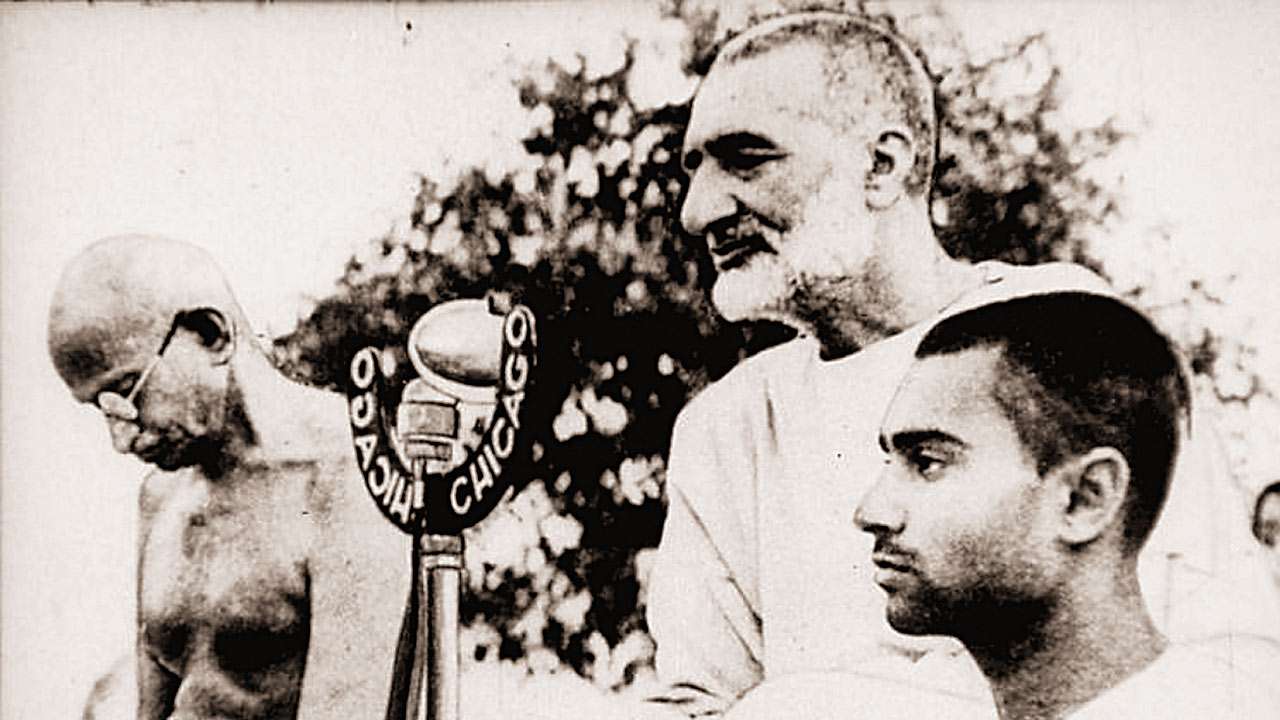
The trauma of Partition in 1947 was preceded by frenzied politics in North-West Frontier Province (NWFP), an untold saga of realpolitik in the 1930s and 1940s.
Among the leaders dominating its political stage, Khan Abdul Ghaffar Khan was a towering figure whose life and times are recounted in Raghvendra Singh’s book ‘India’s Lost Frontier — The story of North-West Frontier Province of Pakistan’. (Read DNA Opinion 18-9-19)
In a chapter aptly titled ‘The Pathan Jeremiad’, Singh evokes this undisputed leader who stands out like a Prophet from the Old Testament. “Khan Abdul Ghaffar Khan, Fakhr-e-Afghan, Frontier Gandhi, Badshah Khan, Bacha Khan — call him by any name — was perhaps the only statesman who came close to Gandhi in matters of creed and faith.”
“A key political figure of the NWFP, he passed away in Peshawar on January 28, 1988. Within hours of his death, the then Indian Prime Minister Rajiv Gandhi flew into Peshawar and both Afghanistan and India declared a state of mourning. Sadly, his own country, Pakistan, where the National Assembly and the Senate were in session, made no reference to his demise. What is most regrettable is the unusual number of years Ghaffar Khan so ungrudgingly spent in jail as a political prisoner. Born in 1890, he got his first taste of detention immediately after the Jallianwala Bagh massacre in April 1919. Thereafter, it was a case of one incarceration after another, more so when the freedom struggle was over in 1947.”
India’s Lost Frontier is focused on the singular act of MA Jinnah, as Pakistan’s first Governor-General immediately after Independence, dismissing the constitutionally elected cabinet of NWFP under the Congress leader Dr Khan Saheb and installing a Muslim League ministry on August 23, 1947.
Though Dr Khan Saheb was Ghaffar Khan’s elder brother, the lives of the two Khans were dramatically different. In 1929, Ghaffar Khan founded Khudai Khidmatgars wanting to stay away from electoral politics, explains Singh. The movement rested on three tenets: the unity of Pakhtuns, the spirit of Islam and the creed of non-violence.
The 1929 Lahore session of Congress was a high point for “the Khidmatgars, whose participation in their colourful red shirt uniforms was conspicuous and overwhelming, were overjoyed to see Nehru, the new president, wearing a Pathan turban presiding over the Congress deliberations…This was a landmark gesture. The call for complete independence appealed to the psyche of Pathans. Till April 1930, there were only 500 Khudai Khidmatgars, but inspired by the Resolution of 1929, the recruits swelled to 50,000 within six months.”
Despite threats and arrests by NWFP authorities, Ghaffar Khan remained steadfast in his loyalty to both Congress and Gandhi; the Khudai Khidmatgars’ nationalist stance was unwavering, even when their leader faced another jail-term in 1934 and humiliation in court during a sedition case in Bombay.
Trials and tribulations for Ghaffar Khan continued through 1937 and 1940. He found himself steadily side-lined and marginalised even as the Muslim League started levelling charges that Congress was conducting itself as a Hindu body.
“Khan Abdul Ghaffar Khan, a staunch follower of Gandhi, resigned from the Congress Working Committee in 1940 entirely on Gandhi’s bidding,” writes Singh. What an irony of history, for Khan had in 1934 declined the presidentship of the Congress. How did Gandhi justify these turns of events?
Singh finds answers in the Gandhi papers: “Gandhi justified its necessity because of the peculiar position Ghaffar Khan held in his province. People followed Khan without questioning him and like Ceasar’s wife, Ghaffar Khan had to be above suspicion that he was not turning over to violence. Some recent resolutions of the Congress Working Committee indicated that they were restricting the use of non-violence to fight for India’s freedom...it is difficult for me (Gandhi) to continue in the Congress Working Committee and I am resigning from it. Non-violence has added greatly to the courage of the Pathans. He (Ghaffar Khan) is a Pathan and a Pathan may be born with a rifle or a sword in his hand. But Khan Saheb deliberately asked his Khudai Khidmatgars to shed all weapons when he asked them to join the satyagraha...They took up his message and put into practice what became non-violence of the brave.”
Going through the papers of Pyarelal, one of Gandhi’s secretaries, Singh narrates meetings of Ghaffar Khan with Pyarelal in 1965. “Neither the issue of Partition nor of the referendum in NWFP was discussed with us. Sardar Patel and Rajaji pressed for it. We were stunned to find that the decision on both issues had already been taken by Congress High Command. After the Working Committee’s meeting on 3 June 1947, I had said to Gandhiji, ‘You have thrown us to the wolves’. Gandhiji asked us to have no fear. He would spare no effort to see that justice was done to us and India would stand by us if we were oppressed’.”
“Khan Abdul Ghaffar Khan was pained to find how little his comrades understood what they had fought for all those years. How could they imagine we would compromise our principles for the sake of power?”
On August 23, 1947, India not only ‘lost’ the NWFP, a frontier province in which they had an elected Congress government, but also the legacy of Frontier Gandhi who remained true to his principles till his last breath. With Jinnah now in control, the process to crush the Khudai Khidmatgars was initiated.
The author is researcher-writer, journalist and communications consultant